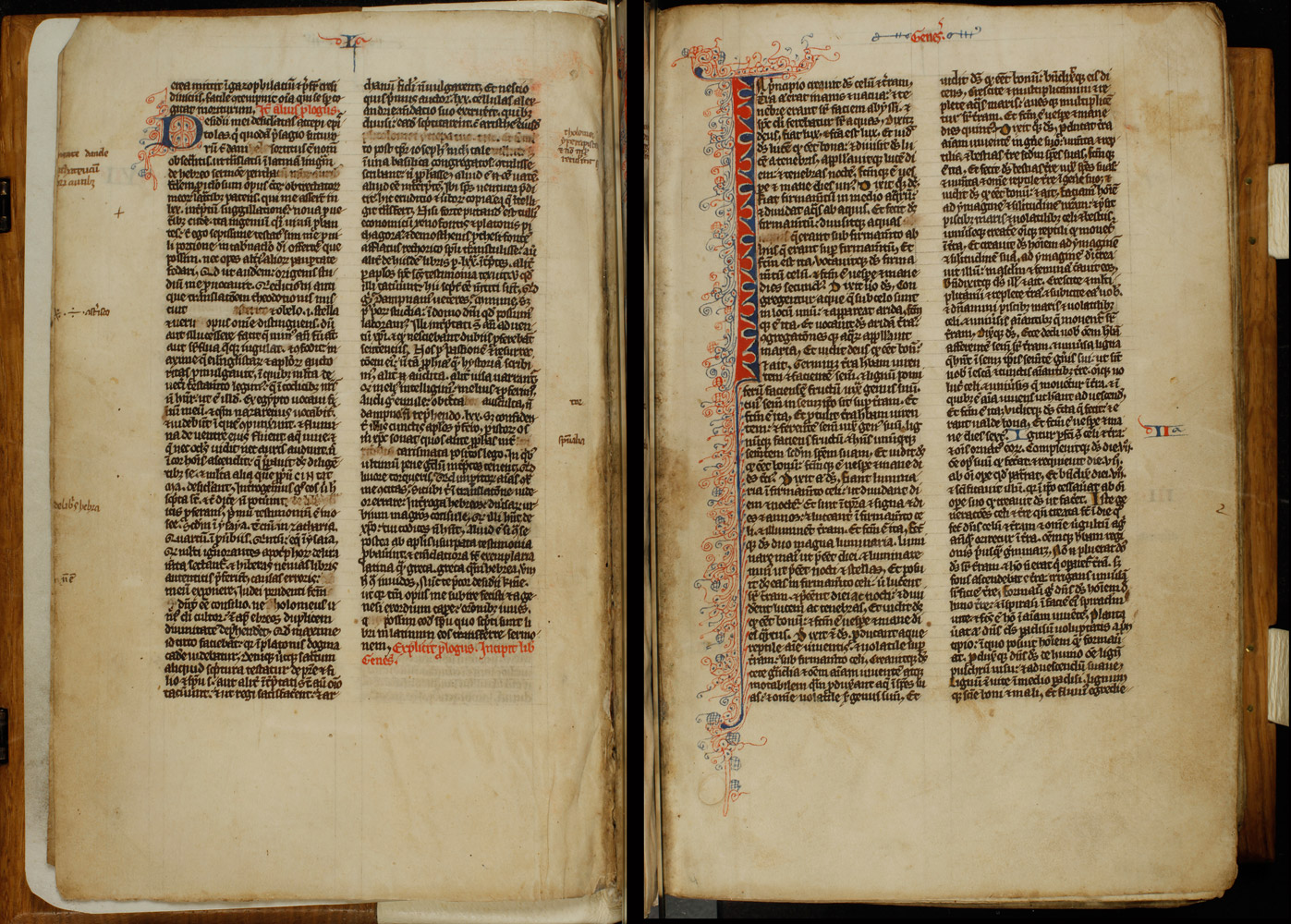The Bible in the Middle Ages
On the left is a prologue by St. Jerome: a letter to a bishop named Paulinus on the study of scripture. The Old Testament begins on the right, with an illuminated letter I decorating the opening words of Genesis: "In principio" (in the beginning).
Before the text of the Bible was translated into English, Christians used the Latin Bible known as the Vulgate. The Vulgate Bible was itself a translation, undertaken just decades after the Roman Empire legalized Christianity. Several different Latin versions of biblical texts had been produced during the early Christian period, but they were inconsistent in quality and accuracy. In 382, Pope Damasus asked Eusebius Hieronymus—better known as Saint Jerome—to revise the biblical text into a standard version using the everyday language of the Roman Empire: Latin. Jerome spent 23 years translating the text of the Bible from Greek and Hebrew. Jerome's translation gradually was adopted by all of Western Christianity. During the Middle Ages, the Vulgate was the Bible used throughout all of Western Europe, including England.
